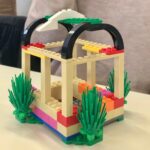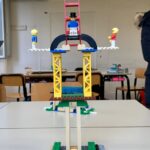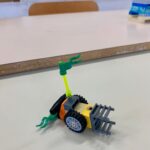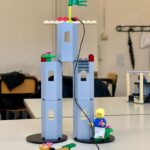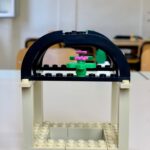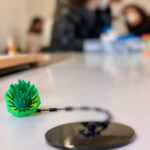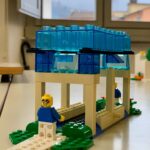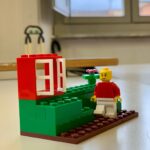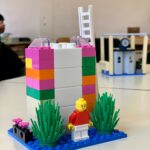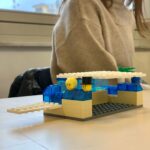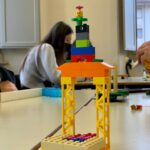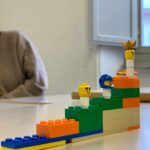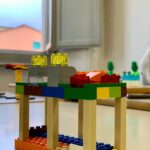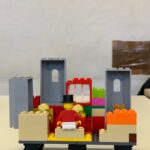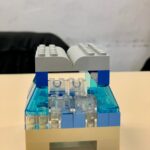it · lesson 2
"Rationalism in Architecture of 20th century"
Lesson summary
The teaching of Art History is probably one of the few lessons that has an immediately expendable practical value. Everything around us has a connection with creativity and the conscious intention to leave a mark of human passage in a given environment. To convey interest and knowledge related to this discipline there are several methodologies, all of which are far from the rigid frontal lecture. The worst method of teaching certainly remains the one that involves the lecture given to students who take notes and are evaluated by tests in which they are required to rigorously return what the teacher proposes. What the student must learn, with this method, does not constitute competence, but is mere knowledge, moreover declined on content elaborated by the very teacher who proposed it. No intervention by the learner, no freedom of interpretation, no autonomous discovery.
The method can improve in the restitutive phase if the latter is conceived as a moment of group research and with individual restitution through multimedia papers to be exhibited to the whole class.
If conscious competence is to be developed, in relation to the chosen topic however, the objectives to be achieved must be reviewed, the methodology completely reworked and the restitution upon which the degree of acquired competence is to be evaluated must be thought about.
In this rethinking process, the operational methodologies to be adopted are first defined: 1 – Cooperative learning; 2 – Learning by doing; 3 – No violent communication; 4 – Experience in the field; 5 – Attention and promotion local resources; 6 – Development of entrepreneurial skills; 7- Inclusion
The purpose of the proposed process is to develop skills beyond purely scholastic ones, so that Art is perceived not only as an expression of the human intellect, but also and above all as a resource and a value, particularly at the local level.
The use of Lego Serious Play makes it possible to be able to carry out all the planned methodological steps.
In lieu of the frontal lecture, I chose to show a film in which the characteristics of rationalist architecture between the late 19th century and The first fifty years of the 20th century are illustrated. The link to see the film on youtube was posted on Classroom and students were able to watch it at home. The choice was made by selecting, among the possible videos offered on the net, the one that was deemed most appropriate to the skills and prerequisites possessed by the students. Groups were formed and asked to discuss the video viewed and think of a question for each component. Provided with Lego bricks, I asked each to shape their own question. Each developed his or her own question by comparing first with the group and then with the whole class. From this discussion came the skills necessary to identify a rationalist building in the area, and of it it was possible to construct an illustrative brochure to be used as a product of ingenuity in a major exhibition focused on science and the scientific approach in all disciplines.
To explicate the process the students arrived at, the following were produced:
- A video compiling all the individually produced brochures with fast scrolling and impactful due to the musical base used
- A slow video of the brochures so that they are readable
- An explanatory video of all the work done
The exhibition at the Garden of Inventions lasted for a week, and students in turn were responsible for managing the reception of visitors.
During a bilateral meeting organized with Daniel Weiss and Barbara Grazzini, we checked the effectiveness of the activity. We proposed that the students build a model with Lego Serious Play of how they felt about having this experience. The following observations emerged:
- Everyone participated, no one ever felt inadequate
- Everyone was able to flesh out their doubts and especially to express them in the context of the class
- Doubts turned out to be a resource for everyone, because they triggered the discussion from which answers emerged
- The answers are not truths imposed by a teacher, but discoveries made gradually by the students themselves and shared
- By doing and discussing as a group, the following were learned
-
- sooner,
- better
- more
- freely
STEPS OF WORK
- Assessment of prerequisites possessed by students.
- Selection of topics to be covered.
- Searching for appropriate videos.
- Uploading links to classroom.
- Organizing the teaching unit on miro board.
- Sharing the miro board by communicating the link on classroom.
- Viewing the video at home.
- Formation of working groups.
- Delivery of Lego serious play from which each person can choose the pieces they need.
- Each person has to construct with the lego, his or her own question related to the video viewed.
- Each group discusses the proposed questions and Lego construction of all the questions.
- Everyone displays their question to the rest of the class, including in other community languages.
- All phases of the activity are photographed and filmed.
- A discussion arises within the whole class and answers to the questions constructed with LEGO® SERIOUS PLAY® are found together.
- Students are given a new task: create an illustrative brochure of a rationalist architectural emergence placed in the local context.
- Identification of a building. The choice falls on the New Flower Market in Pescia.
- Individual visit to the Flower Market where, if possible, photographs are taken of the structure.
- Uploading to classroom of links to sites that illustrate the genesis and operation of the Pescia Flower Market.
- Creation by each person of a brochure illustrating the building
- Uploading of brochures to classroom.
- Realization of Video illustrative of all the activities carried out to build the brochures.
- Realization of fast video, with musial background, in which all the brochures flow.
- Realization of slow video in which time is given to read the brochures
- Participation in the Yes. Genius! and the Garden of Inventions from the Caript Foundation of Pistoia.
- Management of the exhibition space with visitor reception and description of what has been achieved.
- Reporting on activities through Lego serious play.
- Questions to be turned into a Lego model:
-
- How did you find approaching the topic with this methodology?
- Are there strengths in this method in your opinion? What are they?
- Are there and what are any downsides to this activity?
- Recording and video footage of the responses constructed.
TOOLS USED
- Classroom
- Miro board
- Dedicated sites (link video)
- Photoshop
- Publisher
- Movie Maker
